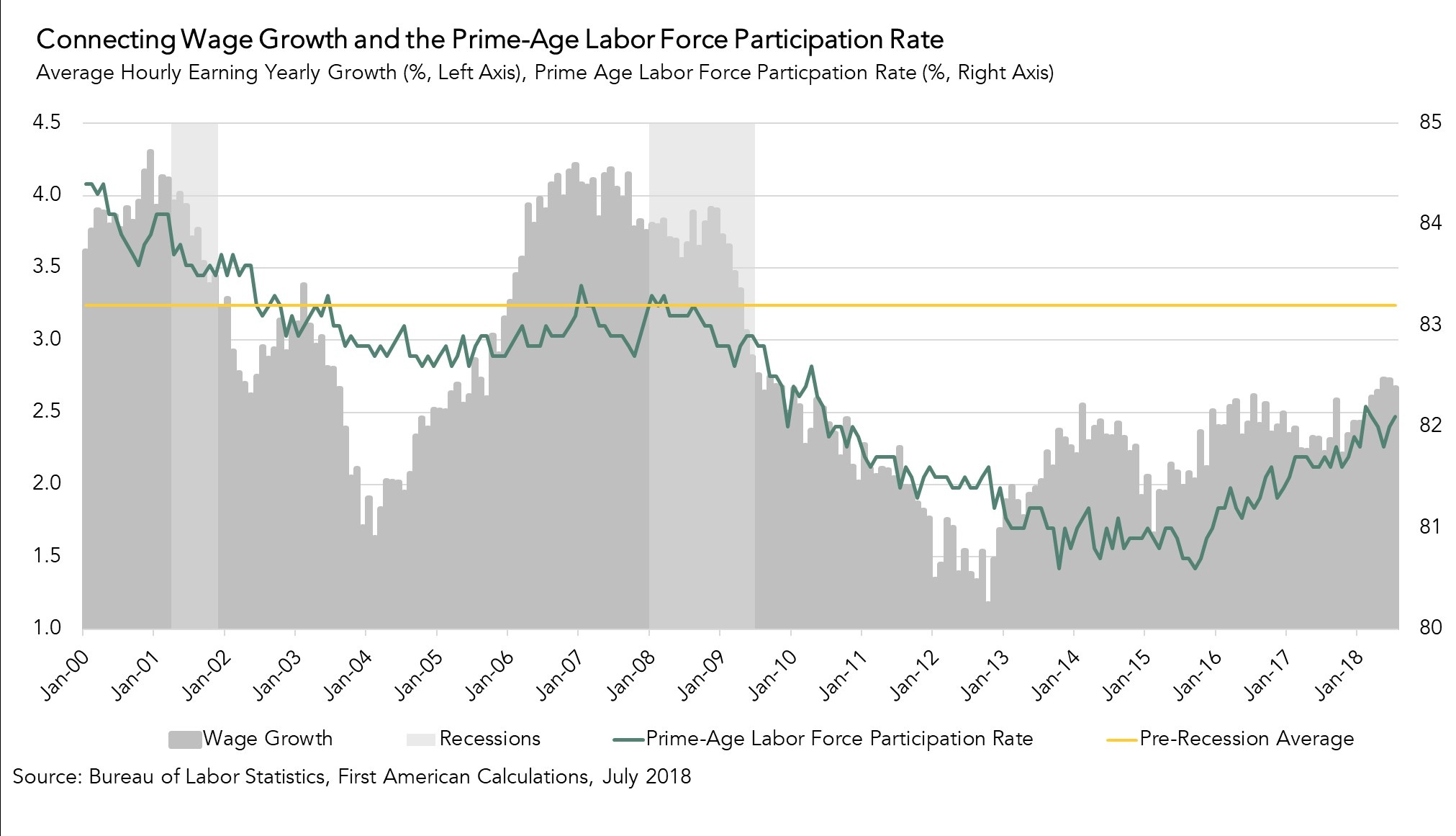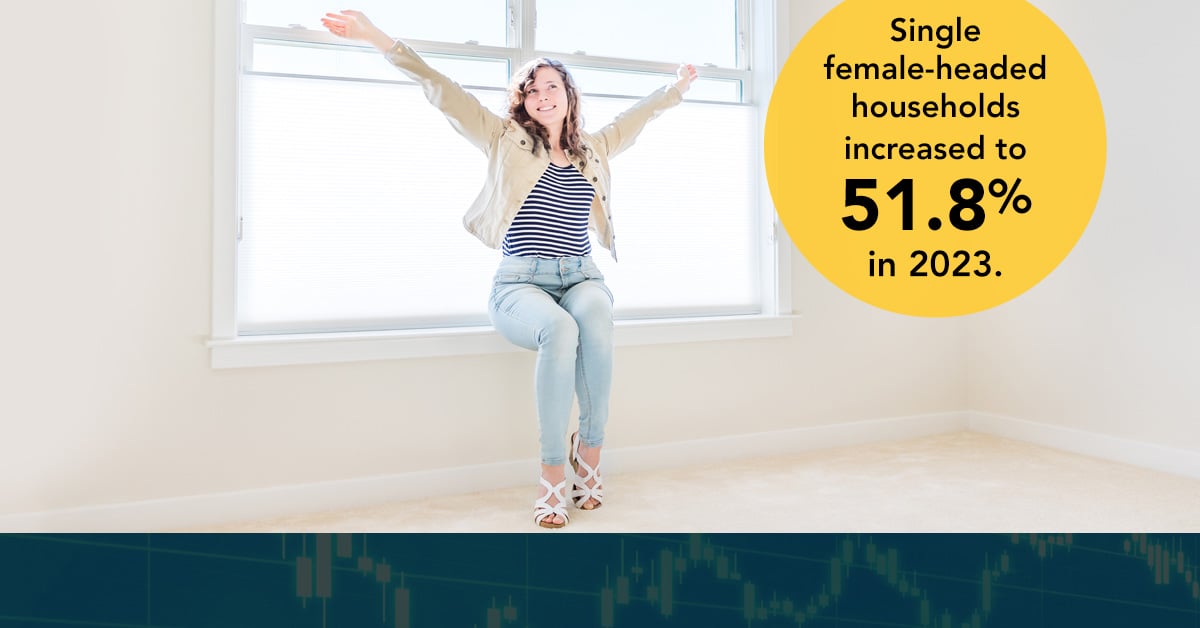Home buyers should feel a bit more confident today after the Bureau of Labor Statistics’ employment situation report for July stated that the unemployment rate edged down to 3.9 percent, and hourly wages continue to increase. House price appreciation has exceeded wage growth for 6 years, so ongoing increases in wage growth could translate into some relief for potential buyers. But what is the trajectory for wage growth?
“If you’re interested in one indicator to watch for the outlook for wage growth, then look no further than the prime-age labor force participation rate.”
Unemployment numbers have remained low for July, and average hourly earnings are up 2.7 percent over a year ago for production and non-supervisory employees. However, they remain below the pre-recession pace of growth of almost a decade ago. This lackluster growth continues to puzzle experts. Since the job market has been so strong for so long, should low unemployment not lead to higher wages? It turns out that many experts are following the wrong wage growth indicator, the broken Phillips curve relationship.
A stronger indicator of likely wage growth is the prime-age (25- to 54-year-old) labor force participation rate. As this participation rate rises, competition among employers for workers increases, leading to higher wages. The prime-age labor force participation rate, which hit a post-recession low in September 2015, rose steadily to 82.1 percent as of today’s unemployment report, indicating that competition for workers may be heating up among employers and that higher wages may be on the horizon.

The current prime-age labor force participation rate, our “new Phillips curve,” indicates production and non-supervisory wage growth should be 2.6 percent. This is much closer to today’s reported growth rate of 2.7 percent, when compared with the traditional Phillips curve model projection of 4.0 percent. If the prime-age labor force participation rate continues this trajectory and reaches its pre-recession average of 83.2 percent, we estimate annualized wage growth would rise to 3.3 percent. So, if you’re interested in one indicator to watch for the outlook for wage growth, then look no further than the prime-age labor force participation rate.



